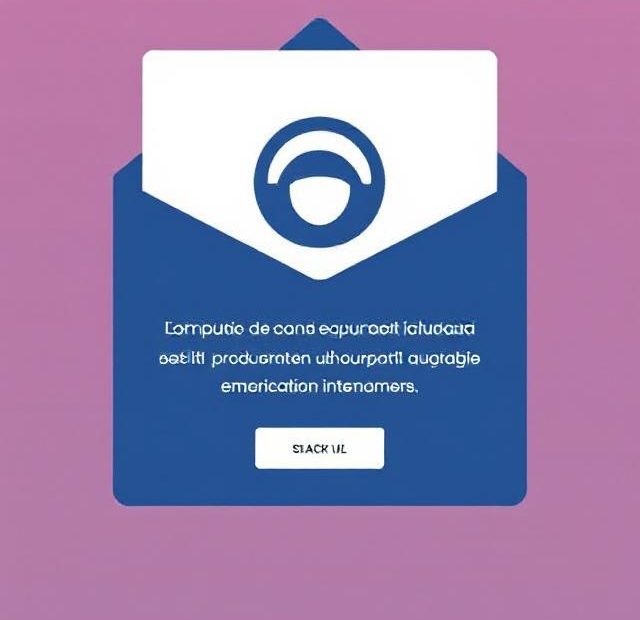Launching an email campaign is only half the battle—knowing whether it actually works is where the real success lies. If you want to improve performance and achieve better ROI, you need to track the right email campaign KPIs (key performance indicators).
This guide covers the most important KPIs you should monitor, why they matter, and how they help shape smarter strategies. Whether you’re a marketing pro or a business owner running your own campaigns, these insights will help you get the most out of your email marketing.
What Are Email Campaign KPIs?
Email campaign KPIs are measurable metrics that tell you how your email is performing. These indicators reveal what’s working and what’s not—from how many people open your emails to how many take action after reading them.
By tracking the right KPIs, you can:
-
Measure the success of your campaigns
-
Identify weak spots
-
Optimize content, design, and strategy
-
Increase engagement and conversions
Now let’s explore the most valuable KPIs to track.
1. ✅ Open Rate
Open rate measures the percentage of recipients who opened your email.
Formula:
Open Rate = (Emails Opened ÷ Emails Delivered) × 100
A good open rate tells you that your subject line and sender name were compelling. If your open rate is low, it may be time to A/B test subject lines or clean your list.
🎯 Good benchmark: 15%–25% depending on your industry.
2. ✅ Click-Through Rate (CTR)
Click-through rate tracks the percentage of people who clicked on a link inside your email.
Formula:
CTR = (Unique Clicks ÷ Emails Delivered) × 100
CTR gives insight into how effective your content, design, and call-to-action (CTA) are. High CTR means recipients are interested and engaged.
🎯 Good benchmark: 2%–5%
3. ✅ Conversion Rate
This is one of the most important email campaign KPIs—it measures how many recipients completed a desired action after clicking your link, such as making a purchase, filling out a form, or booking a call.
Formula:
Conversion Rate = (Conversions ÷ Total Clicks) × 100
This KPI ties your email’s performance directly to business goals and revenue.
🎯 Good benchmark: Varies widely by goal, but 1%–5% is common.
4. ✅ Bounce Rate
Bounce rate refers to the percentage of emails that could not be delivered to the recipient’s inbox.
Types of bounces:
-
Hard Bounce: Invalid or non-existent email addresses
-
Soft Bounce: Temporary delivery issues (e.g., full inbox)
Formula:
Bounce Rate = (Bounced Emails ÷ Emails Sent) × 100
High bounce rates hurt deliverability and sender reputation. Regularly clean your email list to keep this number low.
🎯 Good benchmark: Under 2%
5. ✅ Unsubscribe Rate
This shows the percentage of recipients who opt out after receiving your email.
Formula:
Unsubscribe Rate = (Unsubscribes ÷ Emails Delivered) × 100
While some unsubscribes are normal, spikes may indicate irrelevant content, too frequent emails, or poor user targeting.
🎯 Good benchmark: Below 0.5%
6. ✅ Spam Complaint Rate
When users report your email as spam, it negatively affects your sender reputation and deliverability.
Formula:
Spam Rate = (Spam Complaints ÷ Emails Delivered) × 100
Keeping spam complaints low is crucial. Follow email marketing best practices: use opt-ins, personalize content, and avoid clickbait subject lines.
🎯 Good benchmark: Less than 0.1%
7. ✅ List Growth Rate
Are your email subscribers increasing over time? This metric shows how quickly your email list is growing.
Formula:
List Growth Rate = [(New Subs – Unsubs) ÷ Total List] × 100
Growing your list is key to scaling email campaigns and expanding reach. Use lead magnets, opt-in forms, and website popups to attract new subscribers.
8. ✅ ROI (Return on Investment)
Ultimately, you want to know if your email campaigns are worth the effort. ROI measures how much revenue you’re generating from your email marketing versus how much you’re spending.
Formula:
ROI = [(Revenue – Costs) ÷ Costs] × 100
Use this to justify investment in email software, design, and copywriting.
🎯 Good benchmark: $36 return for every $1 spent (DMA average)
Bonus: Engagement Over Time
Tracking when your audience engages (opens/clicks) helps optimize send times. Most platforms provide heatmaps or data trends that show peak interaction times. Use this insight to improve future scheduling and boost engagement.
How to Use Email KPIs to Improve Your Campaigns
Tracking KPIs is only useful if you act on the data. Here’s how to use the insights effectively:
-
Low open rate? Test subject lines, preview text, and sender name.
-
Low CTR? Improve CTA clarity and placement, or test different layouts.
-
High bounce rate? Clean your email list regularly and use double opt-in.
-
Low conversion rate? Align your email with a clearer landing page.
-
High unsubscribe or spam complaints? Review your sending frequency and content quality.
Set specific goals for each campaign and compare your KPIs against benchmarks to measure progress.
Final Thoughts
Tracking the right email campaign KPIs is essential for understanding what’s working and where to improve. By keeping an eye on metrics like open rate, CTR, bounce rate, and ROI, you can refine your strategy, grow your list, and deliver emails that convert.
Remember, email marketing success doesn’t happen overnight—but with consistent tracking and smart optimization, you’ll see your numbers (and revenue) climb.
Also, you can learn more about ROI with Email here.
